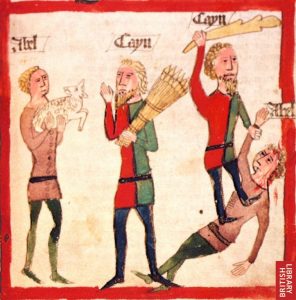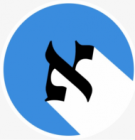Following the initial discussion about the Hebrew meaning of Cain and Abel’s names, in this post I would like to share one fascinating original Hebrew text-based interpretation and to share some of the perspectives of the old rabbinic literature. This Jewish rabbinic literature based a lot of its ideas, thoughts and conclusions on paying attention to the very little details found in the original Hebrew.
First, let’s have a look at the biblical description:
“And Adam knew Eve his wife; and she conceived, and bare Cain, and said, I have gotten a man from the LORD. And she again bare his brother Abel.” (Genesis 4:1-2 KJV)
When comparing between the English translation and the original Hebrew, one of the first things which stands out is the difference between the English ‘and she again bare’ to the Hebrew ‘Va-tosef La- ledet.’ {ותסף ללדת}
The Hebrew verb ‘Le-Hosif’ {להוסיף} (the infinitive form of ‘Va-tosef’) means ‘to add.’ While the English translation chose to formulate it as ‘again’ which suggests that the same action – giving birth – was done again, the original Hebrew can suggest she gave birth to MORE children!

This not-so-little detail is the foundation for one of the most interesting approaches in the rabbinic literature that explained that Cain and Abel were NOT the ONLY children of Adam and Eve (Seth excluded).
In fact, the rabbinic literature used another ‘little Hebrew hint’ to better demonstrate this idea. In the original Hebrew the full phrase is: “Va-Tosef La-Ledet Et Achiv Et Havel” {ותסף ללדת את אחיו את הבל}(“and she again bare his brother Abel”).
Take another look at the original Hebrew and now you will notice that immediately after the verb ‘La-Ledet’ {ללדת} (‘to bare’) there is a short two letter word ‘Et’,{את} and if you will have another look you will find the same two letter ‘Et’ once again – ‘ET Achiv ET Havel.’ {את אחיו את הבל} The Hebrew word ‘Et’ does not have an English equivalent. It is a Hebrew preposition which is used to indicate a direct object and in English ‘Et’ is ‘swallowed’ by the preposition ‘the’ in most cases or in our case in the word ‘his’ (‘HIS brother Abel’).
According to the rabbinic literature, every time this little Hebrew proposition ‘Et’ appears, it implies ANOTHER person was born, because the original Hebrew used the verb ‘to add.’
Now immediately after the first ‘Et’ the Hebrew word ‘Achiv’ {אחיו} (‘his brother’) appears. Interestingly, if one changes the vowel in this word from ‘Achiv’ to ‘Aechav’ {אחיו} – both forms written the same in the original Hebrew text of the Torah – one will receive the Hebrew word for ‘his brothers.’
However, in Hebrew, unlike English, the plural form of ‘brother’ (‘brothers’) refers to BOTH genders and can be understood also as ‘his SISTERS and brothers’ or ‘his sisters and brother’ – as in the next example: ‘Cain’s sisters and ONE brother.’
Following this idea and according to the rabbinic literature’s interpretation, this entire verse tells us that together with Abel were born also TWO female twins (in other words, one son and two daughters delivered at the same birth)!
*According to one rabbi even a grand total of THREE twin daughters since the Hebrew word ‘Et’ appears once again in the biblical description of the birth of Cain. Cain’s birth included a twin sister also.
